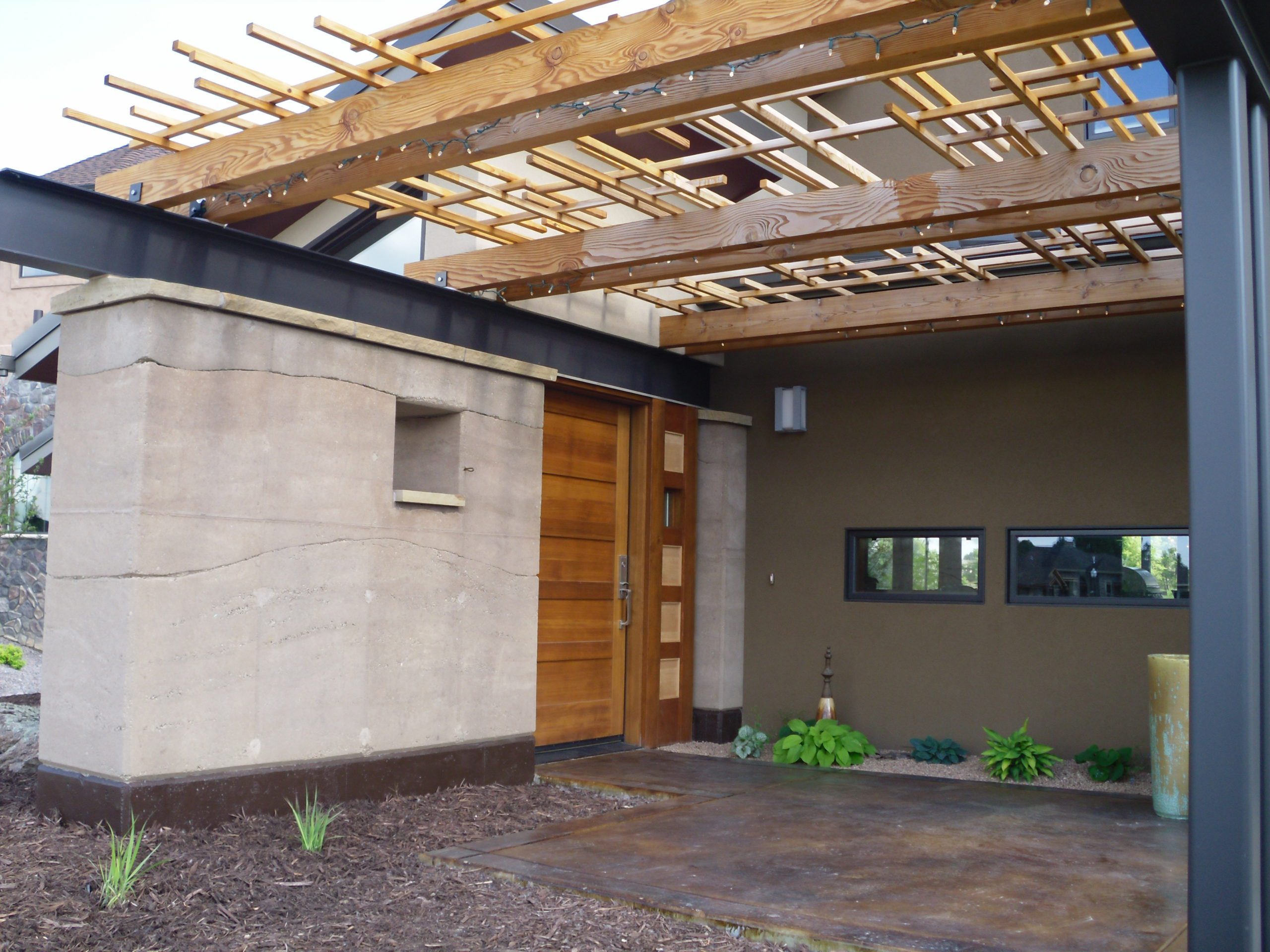Thermal mass is the property of materials to store high amounts of heat energy. Thermal mass is found in heavy and dense materials such concrete, stone and ceramics. When used correctly in construction, thermal mass elements stabilize the temperature inside a building by absorbing heat during the warmer part of the day and radiating heat during the cooler part of the day. This affectively dampens temperature swings inside a building and reduces strain on the heating and cooling systems.
A historic example of thermal mass is at the Anasazi dwellings at Mesa Verde Park in Colorado. Hunkered in the canyon and facing south, the stone cliff walls are heated by the winter sun during the days and the heat slowly radiates out during the night heating the air inside the dwellings. Then in the summer, the overhang of the cliff shades the walls keeping the spaces cool during the hot summer days.
Today, we can incorporate this basic principle of thermal mass and couple it with modern technology. Consider running a radiant floor heating system through concrete floors, or incorporating a south facing rammed earth wall under a proper roof overhang. When thermal mass inside a building is combined with an affective passive solar design and proper cross ventilation in a dry and arid climate, it is possible to eliminate the need for an active mechanical system entirely.
Thermal mass buildings perform differently than buildings without this heavy material. Air temperature inside a space can change quickly with the opening of an exterior door. If during the winter for example, in a building without thermal mass a thermostat near the door would take several minutes before it registered the change in temperature, then the mechanical system would take a few minutes to turn on, warm up, and then finally deliver warm air to the affected space. But in a building with plenty of thermal mass the cold space is immediately heated by stored thermal energy radiating from the thermal mass element.

